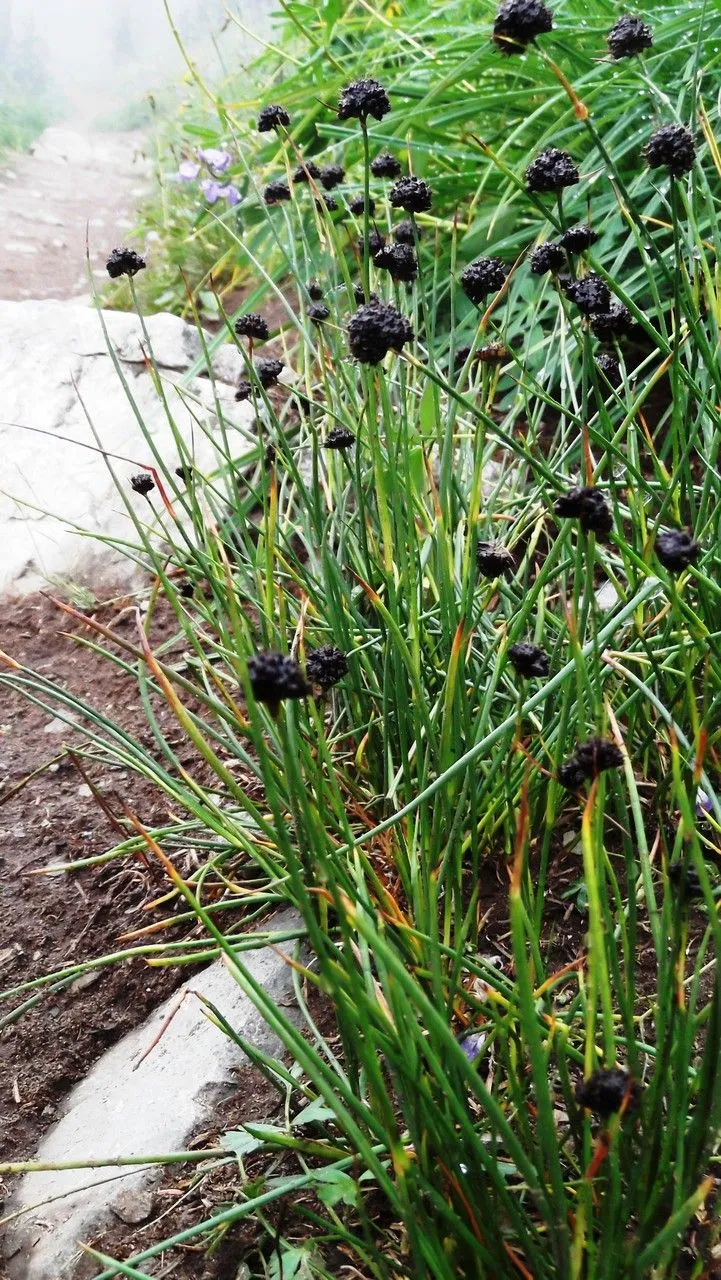
Author: Bong.
Bibliography: Mém. Acad. Imp. Sci. St.-Pétersbourg, Sér. 6, Sci. Math. 2: 167 (1832)
Year: 1832
Status: accepted
Rank: species
Genus: Juncus
Vegetable: False
Observations: Kuril Is. to N. Japan, Aleutian Is. to W. & WC. U.S.A.
Mertens’ rush, scientifically known as Juncus mertensianus, is a perennial species belonging to the Juncaceae family. Initially described by the botanist Bongard in 1832, this hardy rush has established itself across a vast and varied geographical range. Notably, Mertens’ rush can be observed flourishing from the Kuril Islands extending down to northern Japan, with its presence also noted from the Aleutian Islands all the way through to the western and west-central regions of the United States of America.
This species typically thrives in cool, moist environments, often favoring wetlands, marshes, and stream banks. Its resilience and ability to adapt to different habitats make it a notable plant in its native and introduced ranges.
Mertens’ rush is characterized by its slender, erect stems and is often found in dense clumps. These stems are generally cylindrical and can vary in height, depending on environmental conditions. The leaves of Juncus mertensianus are coarse and grass-like, with a distinctive dark green hue that contributes to the plant’s overall hardy appearance.
Flowering usually occurs in the summer months, when Mertens’ rush produces small, inconspicuous flowers that are clustered together. These flowers are a defining feature, contributing to the plant’s reproductive strategy and aiding in the propagation of the species across its range. The seeds of Juncus mertensianus are minute, allowing for dispersal over wide areas, often facilitated by water movements or animal interactions.
Mertens’ rush plays a significant ecological role in its habitats. By stabilizing soil and preventing erosion, it contributes to the overall health of wetland ecosystems. Additionally, it provides habitat and food for various wildlife species, including insects and birds that rely on such plants for survival.
Due to its broad distribution and ecological significance, Juncus mertensianus is a valuable species for study and conservation efforts. Researchers and botanists continue to monitor its populations to ensure that it remains a thriving component of its native and extended ranges.
Eng: mertens’ rush, merten’s rush, slender-stemmed rush
Fra: jonc de mertens
En: Mertens’ rush, Duran’s Rush, MERTENS RUSH, Merten’s rush, Slender-stemmed rush
Fr: Jonc de Mertens
© copyright of the Board of Trustees of the Royal Botanic Gardens, Kew.
Taken Jul 28, 2021 by courtney earle (cc-by-sa)
Taken Jul 7, 2020 by Hannah Carroll (cc-by-sa)
Taken Dec 22, 2014 by EOL − podiceps (cc-by-nc)
Taken Dec 21, 2014 by EOL − podiceps (cc-by-nc)
Taken Dec 21, 2014 by EOL − podiceps (cc-by-nc)
Taken Sep 13, 2012 by EOL − John Brew (cc-by-sa)
Taken Sep 13, 2012 by EOL − John Brew (cc-by-sa)
Growth form>: Rhizomatous
Growth habit>: Graminoid
Growth rate>: Moderate
Ph maximum: 8.0
Ph minimum: 6.0
Family: Myrtaceae Author: (F.Muell.) K.D.Hill & L.A.S.Johnson Bibliography: Telopea 6: 402 (1995) Year: 1995 Status:…
Family: Rubiaceae Author: Pierre ex A.Froehner Bibliography: Notizbl. Bot. Gart. Berlin-Dahlem 1: 237 (1897) Year:…
Family: Sapindaceae Author: Koidz. Bibliography: J. Coll. Sci. Imp. Univ. Tokyo 32(1): 38 (1911) Year:…
Family: Asteraceae Author: A.Gray Bibliography: Pacif. Railr. Rep.: 107 (1857) Year: 1857 Status: accepted Rank:…
Family: Fabaceae Author: Medik. Bibliography: Vorles. Churpfälz. Phys.-Ökon. Ges. 2: 398 (1787) Year: 1787 Status:…
Family: Aspleniaceae Author: (Cav.) Alston Bibliography: Bull. Misc. Inform. Kew 1932: 309 (1932) Year: 1932…